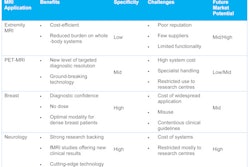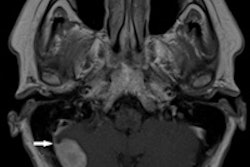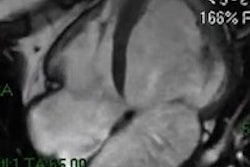
A new study of MRI use at a hospital in Ireland paints a complex picture of the modality, with higher in-hospital mortality and longer hospital stays for patients who got MRI scans. However, this could be because the patients were more acutely ill, according to an article in the July Journal of the American College of Radiology.
The researchers from St. James's Hospital in Dublin also found that healthcare costs increased if MRI scans were ordered but not carried out promptly. For each unit increase in MRI wait time, an inpatient's stay at the hospital increased 1.12 days.
There was a silver lining in the findings: MRI was not being used indiscriminately at the facility and was being reserved for the sickest patients, wrote lead author Seán Cournane, PhD, and colleagues (JACR, July 2014, Vol. 11:7, pp. 698-702).
Effects of imaging
While the number of MRI exams in England, for example, increased by 91% between 2000 and 2006, more advanced imaging for emergency department patients has not necessarily resulted in better patient outcomes, the authors noted.
In addition, early imaging has been associated with a significantly shorter length of stay for inpatients and reduced healthcare costs, but few studies have explored what happens to these patients after they pass through the emergency department and are admitted to the hospital, the group wrote.
"The question remains as to whether an increase in scanning demand is associated with an increased benefit or rather whether it leads to an increased length of stay and healthcare burden," Cournane and colleagues wrote.
For the current study, the group reviewed 18,534 cases of patients with medical emergencies and acute conditions who were admitted to the hospital through the emergency department between January 2010 and December 2012. The cases included individuals admitted to intensive care or the hospital's high-dependency unit.
The median patient age was 63.9 years, and there were slightly more women (51%) than men in the study cohort. Major diseases included respiratory (25%), cardiovascular (17%), neurologic (18%), gastrointestinal (9%), hepatobiliary (4%), and kidney (5%) conditions. The median length of stay was 5.8 days. MRI scans were requested in approximately 8.6% of the 18,534 clinical cases.
MRI and mortality
The researchers found a direct association between mortality and MRI scanning, with an in-hospital mortality rate of 7.8% for patients who received an MRI scan, compared with 4.6% for patients who didn't get scanned (p < 0.01). The researchers attributed the higher mortality rate to the fact that MRI was used in more acutely ill patients.
| St. James' Hospital emergency department visits | ||
| Primary diagnoses | Patients referred for MRI | Patients with no MRI |
| Acute cerebrovascular disease | 6.5% | 2.9% |
| Headache/migraine | 12.3% | 5.3% |
| Congestive heart failure | 9.9% | 6.0% |
| Lower respiratory disease | 11.4% | 15.9% |
| Pneumonia | 4.8% | 6.6% |
| Nonspecific chest pain | 2.2% | 4.8% |
| Asthma | 1.5% | 3.8% |
Patients who underwent MRI exams had a 9.1-day median length of stay, compared with 5.8 days for patients who did not receive an MRI scan. Each unit increase in MRI waiting time -- with cutoffs at zero, one, three, seven, and 14 days -- increased the length of stay by approximately 1.12 days, when adjusted for illness severity and comorbidities.
Based on clinical outcomes of the patients, Cournane and colleagues concluded that MRI scans were not ordered indiscriminately. The low rate of MRI use (8.6%) along with the higher mortality rate associated with MRI suggests that "resources were prioritized" for the acutely ill patients, they wrote.
Because the hospital's MRI service operated on a Monday through Friday schedule, requests for scans submitted on Friday often weren't performed until Monday, leading to additional delays and longer lengths of stay, the authors noted. Scans ordered Tuesday through Thursday had a median time to scanning of 1.2 days, compared with 1.8 days for scans ordered on Monday and 3.2 days for scans ordered on Friday.
Ultimately, restrictions on healthcare funding in Ireland make it difficult to improve the problem by simply acquiring additional imaging resources such as new MRI scanners, according to the authors. They suggest that a time-allocation strategy could be adopted instead to prioritize inpatient imaging. This could result in longer outpatient wait times, but it might be more efficient than the current system.
"Our current funding model in radiology may have resulted in a false economy, as the costs associated with the prolonged [length of stay] exceed those of providing the test," the authors wrote.



















